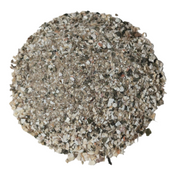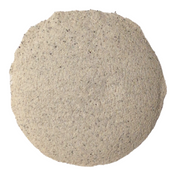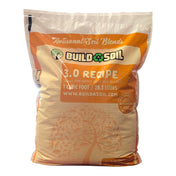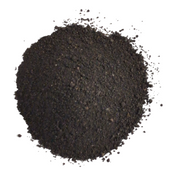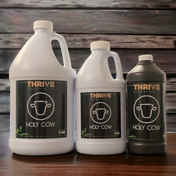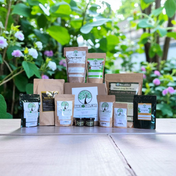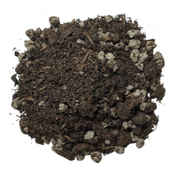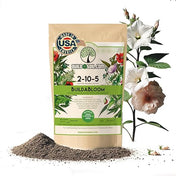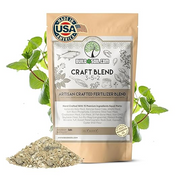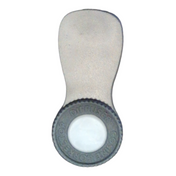
Is there really a secret to rooting cuttings?
You've probably seen our method. If not, here is that blog post on Cloning.
Then you've probably also seen other methods that work too. How do you decide where to start?
No matter what you use to get the job done, all the methods will have at least a few things in common.
1. Temperature
2. Relative Humidity & Light Intensity
3. Oxygen and Moisture Supply
But Why? Why does the temperature matter? Why the humidity? When you know exactly why, you'll look at cloning in a whole new light.
"Fundamentals Of Horticulture"
Page 198
Cuttings which require leaves are taken from herbaceous plants or from woody plants when the wood is immature. With these cuttings, rapid healing of the wounded surface and rapid production of roots are indispensable to the welfare of the cutting. If the cut surface heals slowly or not at all, most of the all-important water within the cutting escapes, and rot-producing organisms are likely to invade the tissues. How does the cutting heal the wounded surface? In general, immediately after the cut is made the intercellular spaces and the cells just beneath the cut become filled with sap. The sugars in the sap change to unsaturated fatty acids, and these, in turn, combine with oxygen of the air in the formation of the skinlike, varnish-like layer of material, or suberin. Suberin possesses the remarkable property of keeping the water within the cutting and resisting the attacks of rot-producing organisms. However, this layer is effective for a short time only since it is very shallow and nonelastic and cannot adjust itself to changes in water pressure within the cutting due to the intake and outgo of water. For these reasons a more permanent layer is formed. How does the cutting develop this layer? In general, in very young dicotyledonous herbaceous stems the permanent layer develops from the pericycle or cortex. These tissues have the ability to change into meristem and thus produce new cells. On the other hand, in relatively old dicotyledonous herbaceous stems and in immature woody stems, the permanent layer develops from the cambium. In both cases the walls of the new cells are impregnated with suberin, tannin and other materials and they are corky in nature. Since this layer is being renewed constantly, it is durable; since it is several cells thick, it is deep-seated; and since it is elastic, it withstands the stress and strain due to changes in water absorption and transpiration. How does the cutting develop the root system? In general, the pericycle in young stems and the cambium in the somewhat older stems develop growing points, and these growing points develop into individual roots.
Is there anything that can be done to facilitate the development of the temporary and permanent protective layers and the production of roots with rapidity? A discussion of important factors follow.
Temperature - Since with cuttings which require leaves the problem consists in producing roots from shoots, growth of the tops is retarded and growth of the roots is accelerated. The problem, therefore, is to keep the tops cool and the basal end of the cuttings relatively warm. In general, this is done by maintaining a relatively low air temperature and by applying artificial heat to the medium in which the cuttings are placed. The low air temperature, combined with high humidity of the air, maintains a low rate of transpiration. This low rate of transpiration keeps the guard cells turgid and the stomates open. As a result, carbon diozide diffuses in to the leaves and carbohydrate and hormone manufacture takes place. The relatively high temperature at the base of the cuttings promotes rapid oxidation of the fatty acids in the formation of suberin and speeds up the rate of cell division in the formation of the corky layer and the development of the root system.
The application of heat to the basal portion of cuttings is known as bottom heat. Bottom heat is applied in various ways: by lead covered electric resistance, wire, by steam in pipes, and by hot water in pipes. (Or Seedling Heating Mat) Many experiments have shown that high rooting-media temperatures, combined with relatively low air temperatures, facilitate rapid root production. For example, tests at the Ohio Experiment Station have shown that chrysanthemum cuttings kept in sand at 60 F produced a satisfactory root system in 10 days, whereas a comparable lot kept in sand ad 50 F required 20 days.
Relative Humidity and Light Intensity - These factors affect both transpiration and photosynthesis. The student will recall that relative humidity and light intensity have opposite effects on the rate of transpiration. In general, high relative humidity promotes low rates of transpiration and high light intensity promotes high rates. Since low rates of transpiration are needed and since light is needed for making of the carbohydrates and the hormones, the higher the relative humidity, the greater will be the amount of light the leaves can absorb without wilting. For this reason a high relative humidity is maintained.
Oxygen and Moisture Supply - The formation of suberin requires abundant oxygen, and the rapidly dividing meristem requires both abundant oxygen and water. Hence, in the rooting of cuttings, media are used which will enable the growing points to obtain abundant oxygen and, at the same time sufficient moisture for rapid root production. In general, washed, sharp, silica sand, mixtures of sand and peat moss, vermiculite, and mixtures of sand and perlite are satisfactory propagating media for herbaceous and softwood cuttings. These materials are porous, easily drained, and hold sufficient moisture for rapid root development.
Mist propagation of Herbaceous and Softwood Cuttings - Mist propagation consists of maintaining a film of water on the leaves of the cutting and a high relative humidity of the ambient air. In this way, the rate of transpiration is reduced to a minimum, and as a result the guard cells remain turgid, the stomates remain open, and the manufacture of carbohydrates and related substances proceeds unabated even in the presence of high light intensity. Further, with high light intensity, the evaporation of water from the leaves keeps the tops relatively cool, and this in turn lowers the rate of respiration. Thus, with the low rate or transpiration combined with the low rate of respiration, high rates of apparent photosynthesis take place and abundant carbohydrates and other manufactured substances become available for the initiation and growth of the root system.
The book then goes on to describe various methods of automating misting etc. We feel that a light misting and using a humidity dome is best for the small scale grower.


